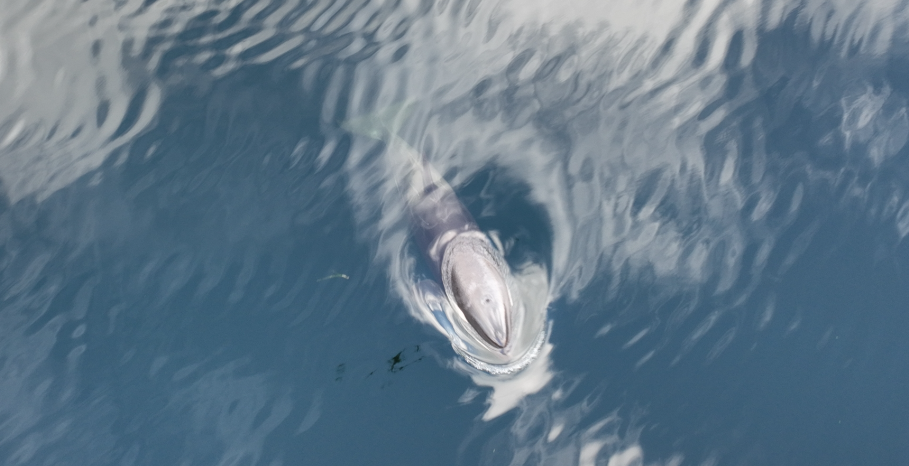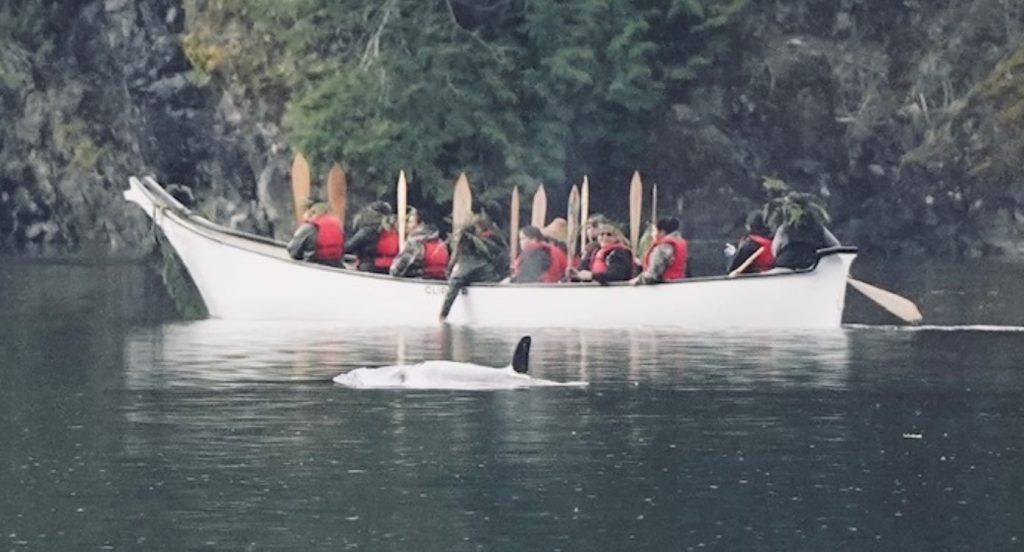Work to rescue an orca calf stuck in a lagoon near Zabellos on Vancouver Island is ramping up, with First Nations officials and marine mammal experts “working tirelessly to finalize a relocation plan for the whale.”
In an update Thursday, the Department of Fisheries and Oceans (DFO) shared that it is working with the ʔiiḥatisatḥ (Ehattesaht) First Nation to work out a plan to safely and successfully capture the killer whale, named kʷiisaḥiʔis — Brave Little Hunter. Teams are also organizing to transport the orca “via sling in vessel” to the open ocean.
The DFO describes the sling as “a large swath of fabric generally used for lifting large animals.”
“Previous killer whale rescue activities serve as useful examples to help with planning, although the timeline for this rescue is much shorter and each situation is unique,” the DFO said in an email.
To ensure the operation’s success, the DFO says the Ehattesaht First Nation has confirmed the road to the lagoon where kʷiisaḥiʔis is will be closed.
“Any non-authorized drones or aircraft use which may disturb kʷiisaḥiʔis will be prosecuted under the Fisheries Act and Regulations. For this to work, Brave Little Hunter needs a quiet and calm environment,” the DFO explained.
When exactly the rescue will take place is still unclear, with the department saying a timeline has yet to be confirmed and that weather will be a factor.
The DFO notes “dry-runs and practice will be essential to getting it right.”
kʷiisaḥiʔis’ skin has been turning white due to low salinity in the water she’s trapped in. Despite this, officials have said the calf is active and isn’t showing signs of emaciation.

In a statement Wednesday, Ehattesaht chief and council said increased rain recently has made the water “a bit more brackish,” adding, that this makes it harder for the calf.
“It’s also probably why she is diving and staying deeper than everyone expected. The fresh water is less buoyant and she wouldn’t be used to the way it feels or
sounds,” the Nation said.
“Every day we are thinking more about kʷiisaḥiʔis. We talk as leadership, we talk with our community and we talk with people from outside like experts but also our knowledge keepers and our storytellers. In each instance, the advice we receive helps us stay on the path of keeping the little hunter as healthy as possible.”
The Nation has also said people in the community have been listening to the orca’s calls on a hydrophone, describing the vocalizations as so filled with longing they “make you almost weep.”
kʷiisaḥiʔis has been stuck in the lagoon for nearly three weeks, after both she and her pregnant mother got stranded at high tide the night of March 22.

“We started organizing, basically immediately, to get people out there,” Chief Simon John recalled during a briefing on March 27.
“By the time it all happened, I think the tide was at its lowest point and I think it had already been over six hours,” John explained. “The whale … tried to move and get back into the water as the tide came in, but when the tide came in, the whale actually started to suffocate.”
John said even through the night, the mother whale had aspirated the contents in her stomach, contributing to her condition.
–With files from The Canadian Press